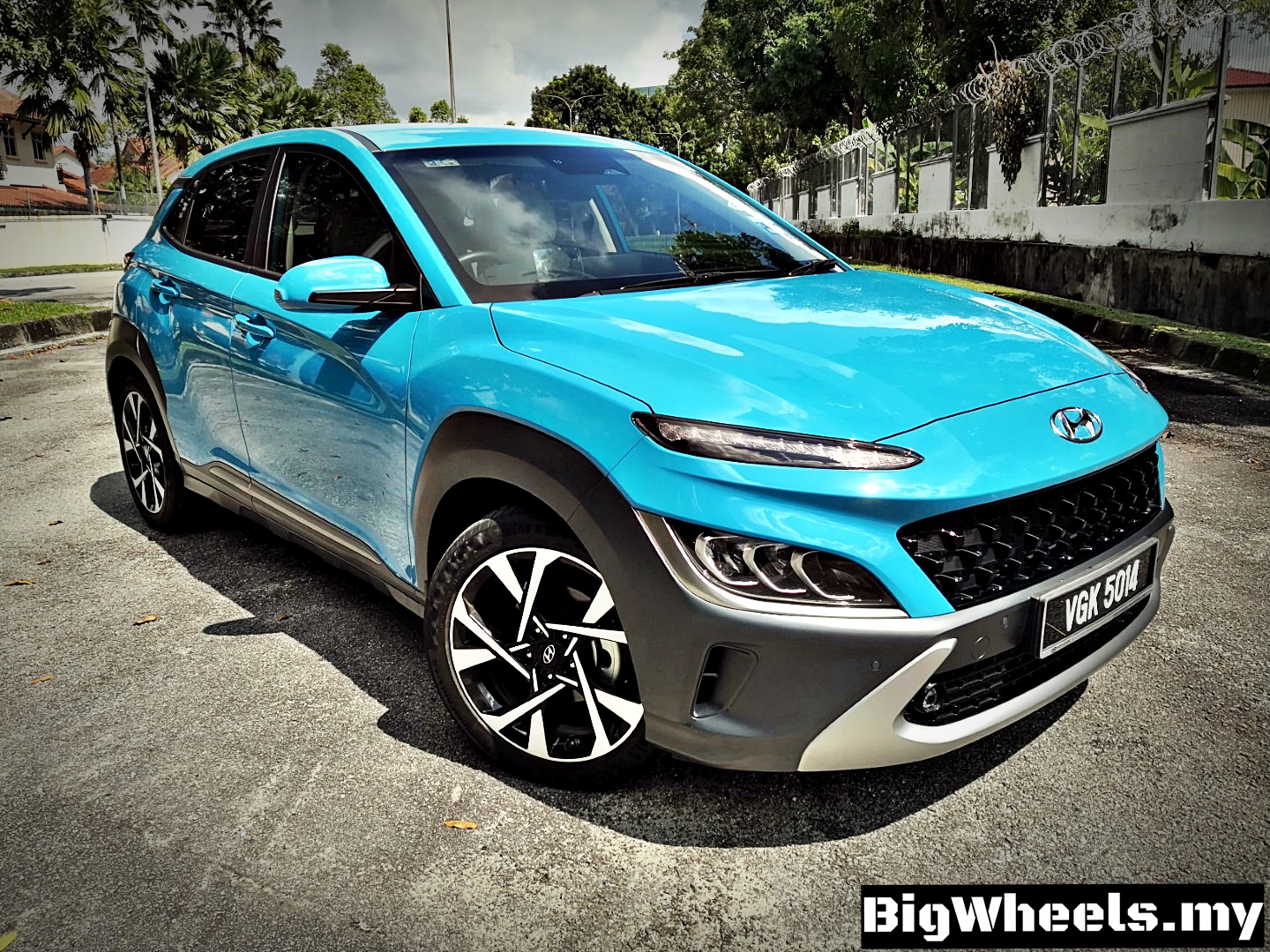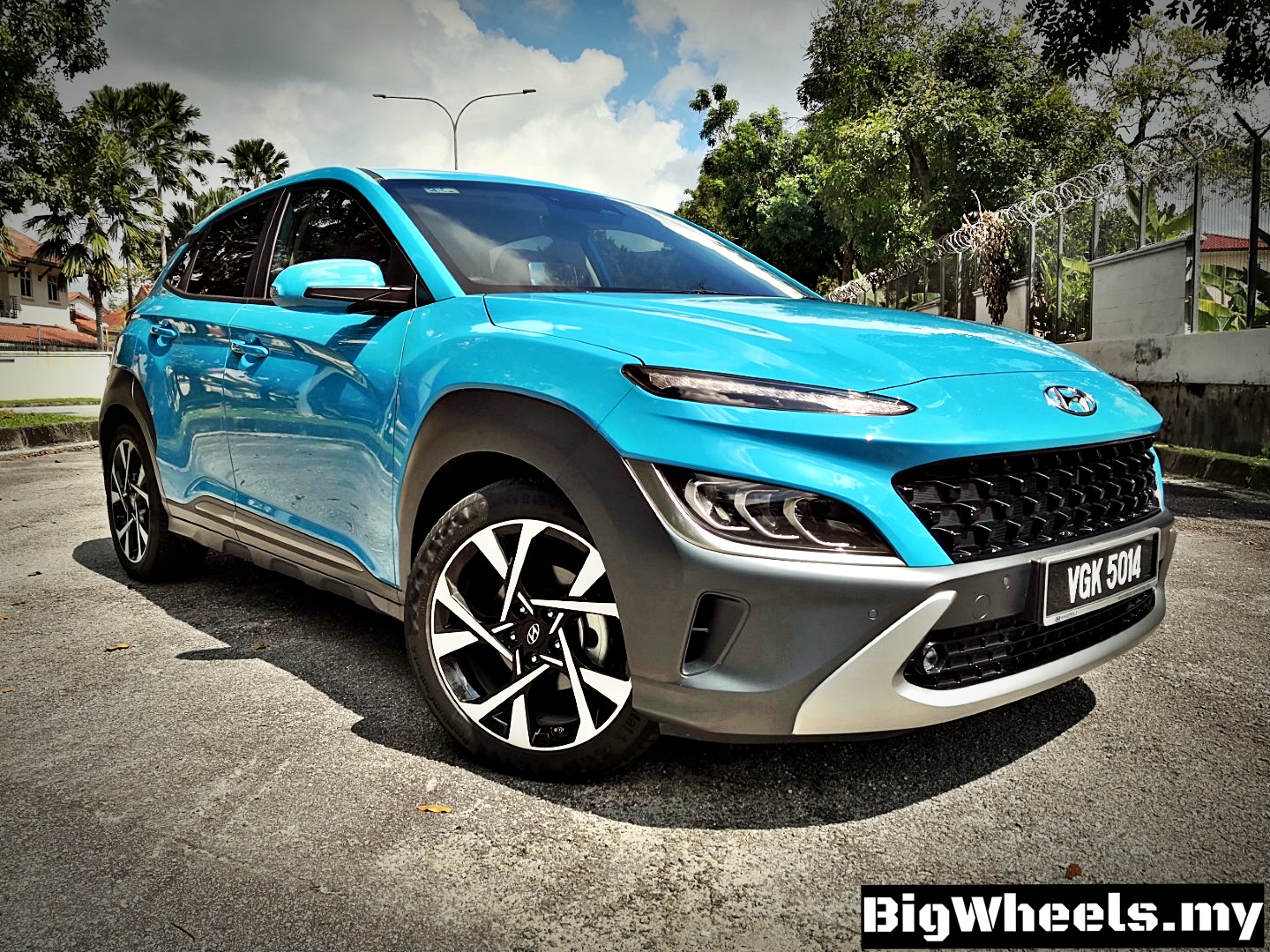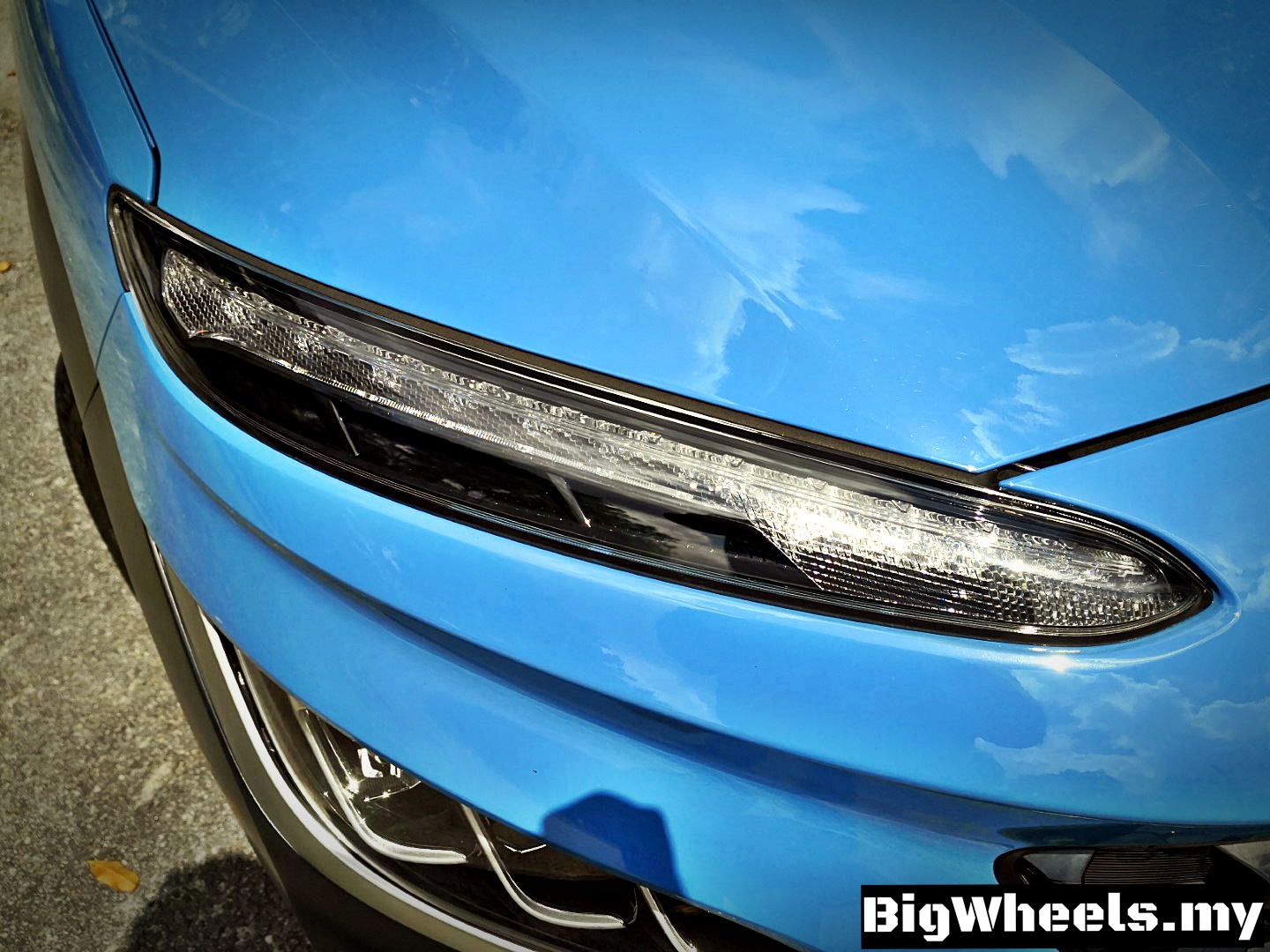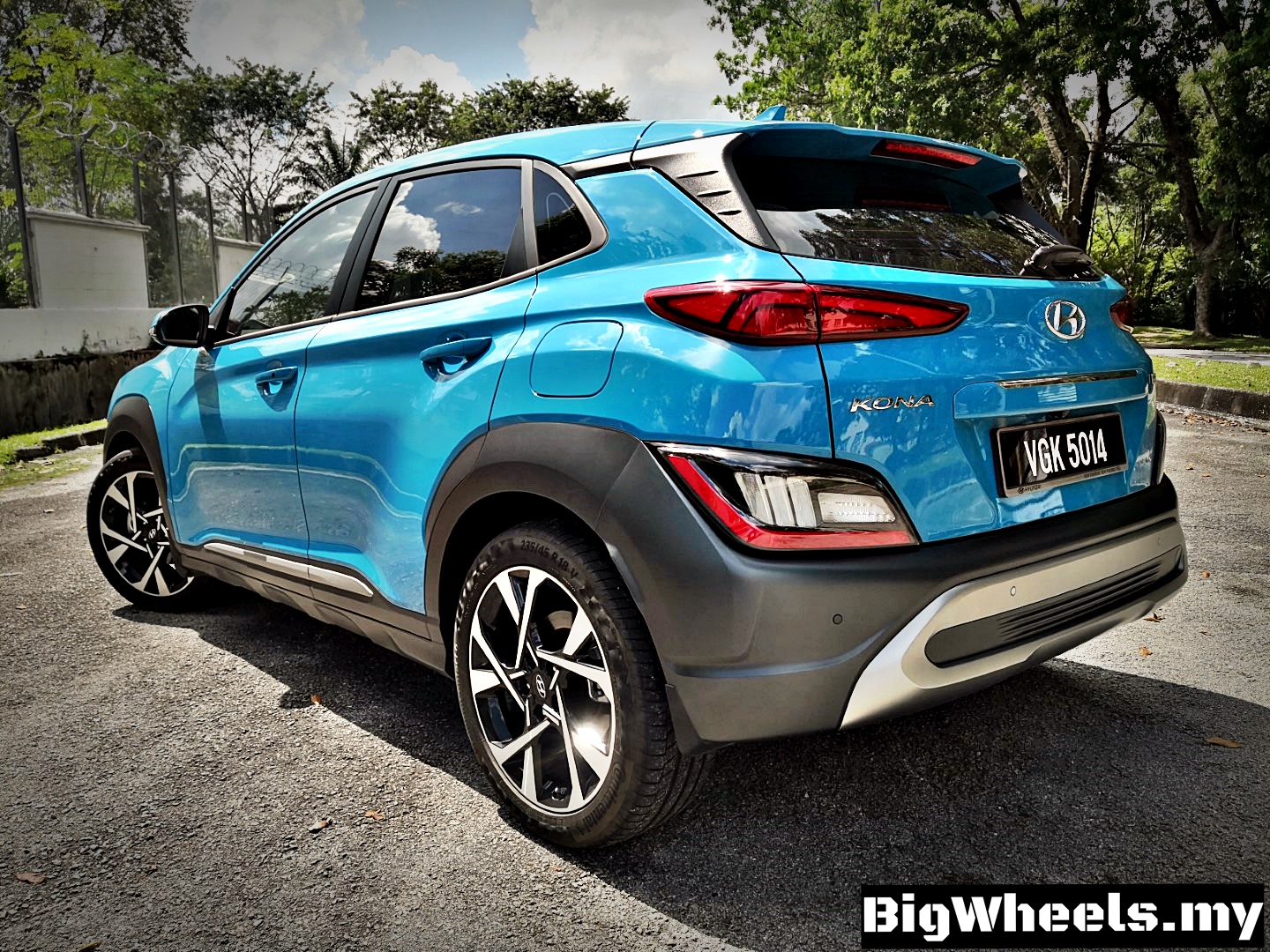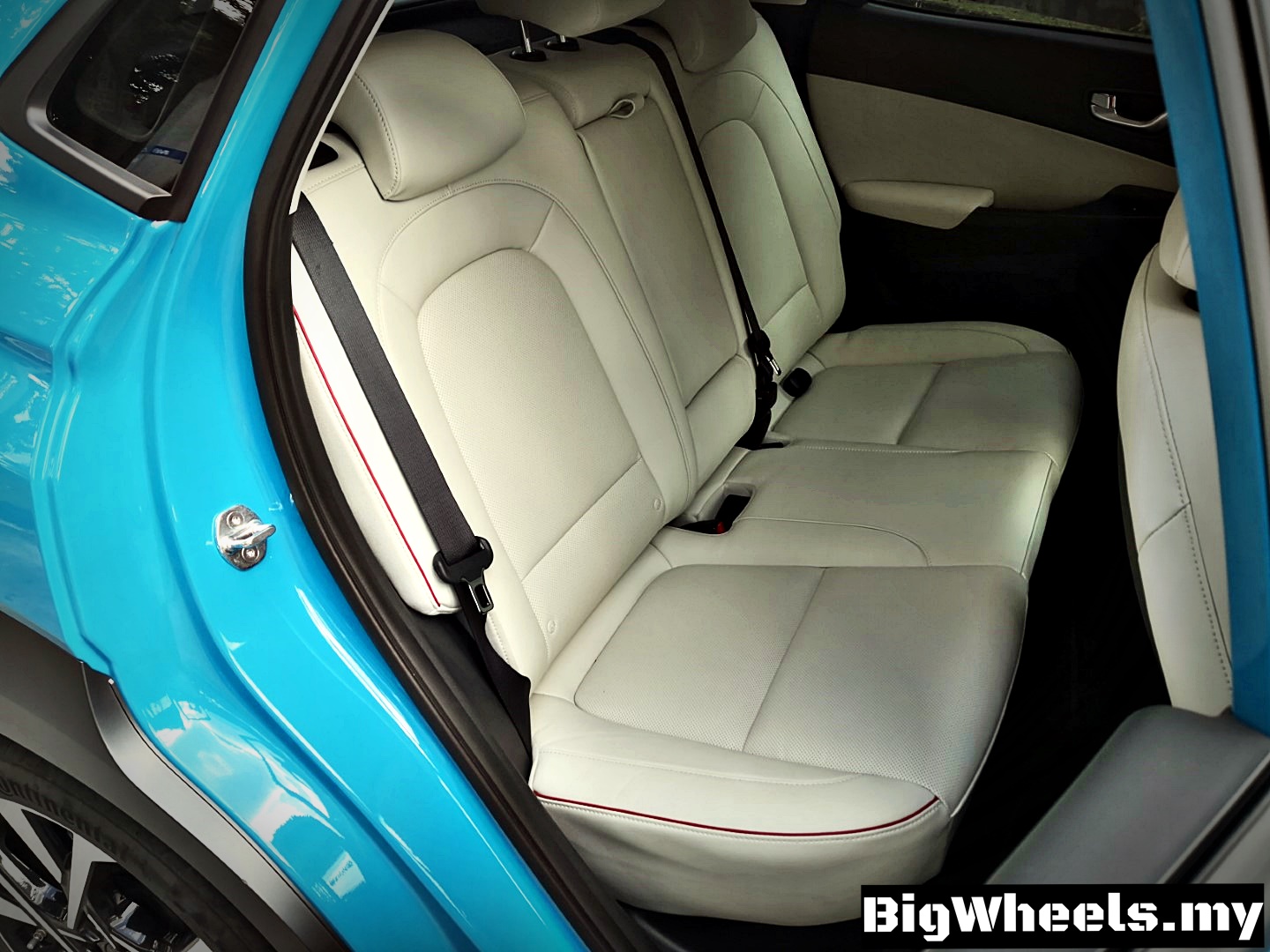After many quiet years in Malaysia, the Hyundai brand came back with a bang in 2021, releasing product after product in various segments beginning from the Sonata, followed by the Elantra, the Staria, the Palisade, and the model we’re looking at here, the Hyundai Kona.
If we look at Hyundai’s product portfolio in Malaysia, the Kona is arguably the most important model for the brand here as it has the most number of variants on sale, namely the Kona 2.0, Kona 2.0 Active, Kona 1.6 Turbo, Kona 1.6 Turbo N Line, and the Kona Electric, bringing the total number of variants to five.
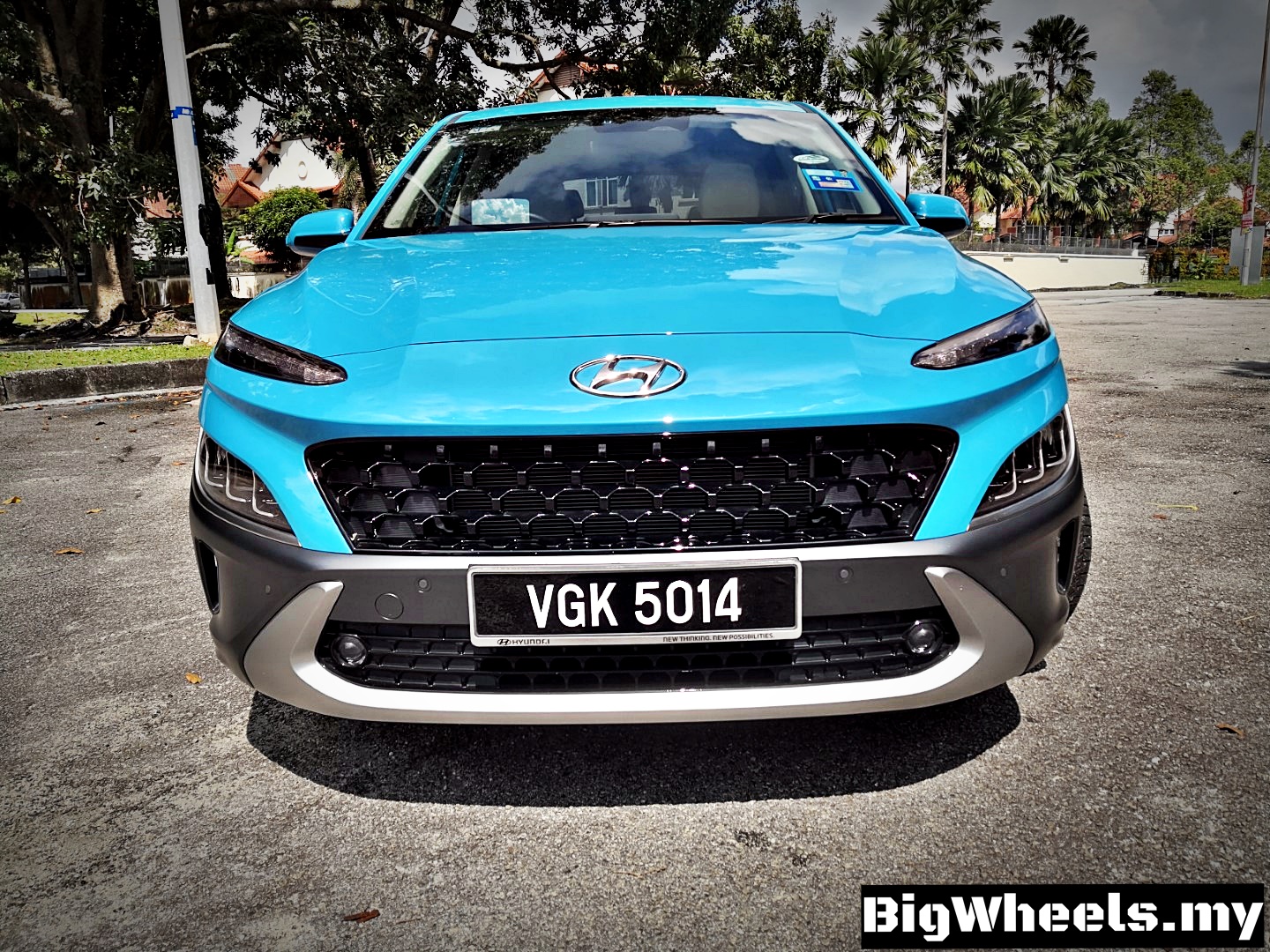
Out of the lot, the model which we managed to get our hands on was the Hyundai Kona 2.0 Active, which was launched in April 2021 with an asking price of RM136,888 on the road minus insurance.
Here to take on models like the Proton X50, Honda HR-V, Toyota Corolla Cross, and the Mazda CX-3 to name a few, the Kona is part of one of the most competitive segments in which you have to either really impress, or just die.
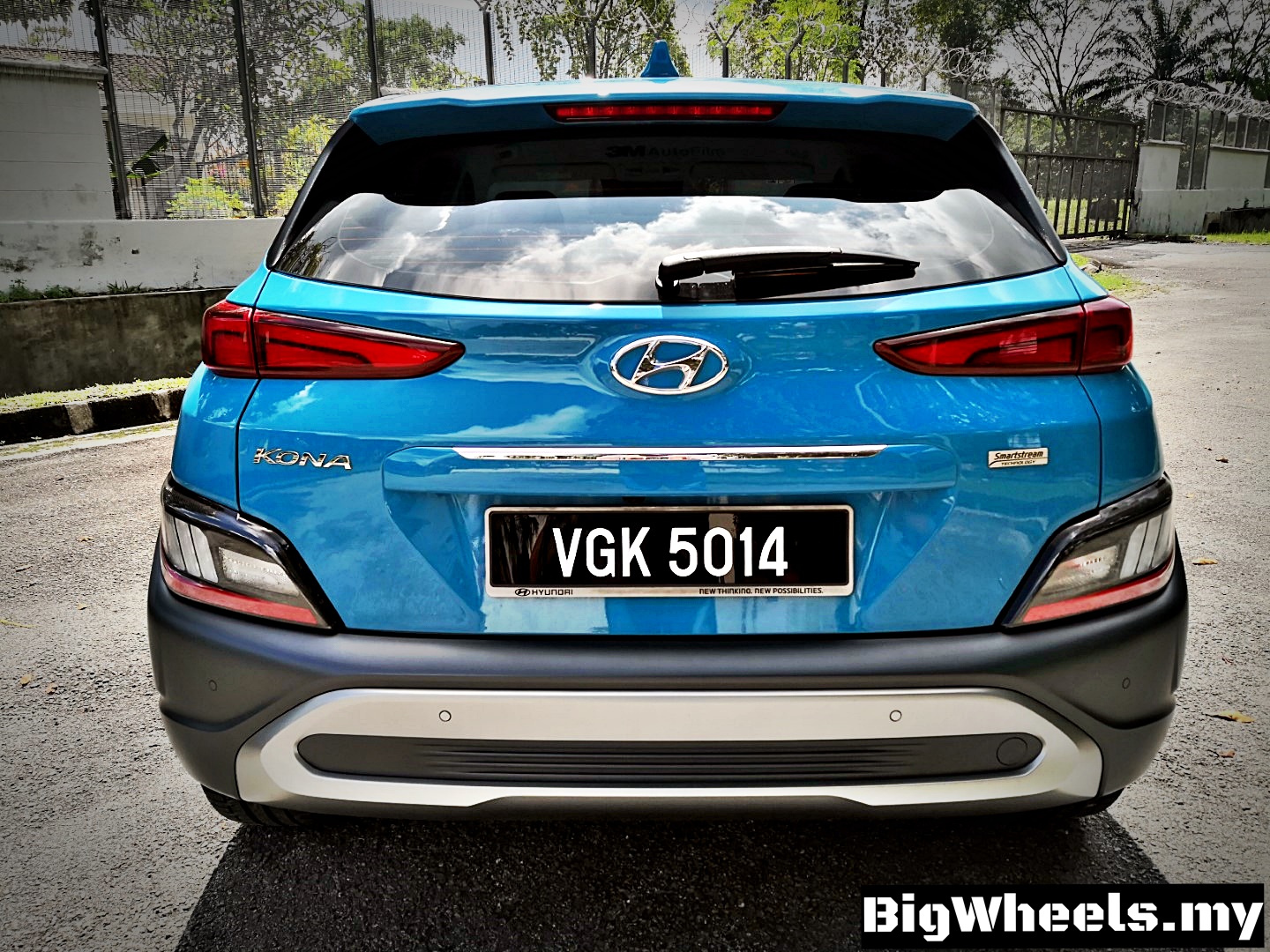
So, the million dollar question here is, does the Kona have what it takes to give its rivals a run for their money?
Overview
Powering the Hyundai Kona Active is a 2.0-litre Smartstream G2.0 Atkinson petrol engine producing 149 PS and 180 Nm of torque, paired to a CVT with eight virtual gears. The powertrain enables the compact SUV to sprint from naught to 100 km/h in 9.7 seconds.
Complementing the engine and the gearbox are four driving modes (Normal, Eco, Sport, Smart), three traction modes (Snow, Mud, Sand), and 15-inch brake discs all around.
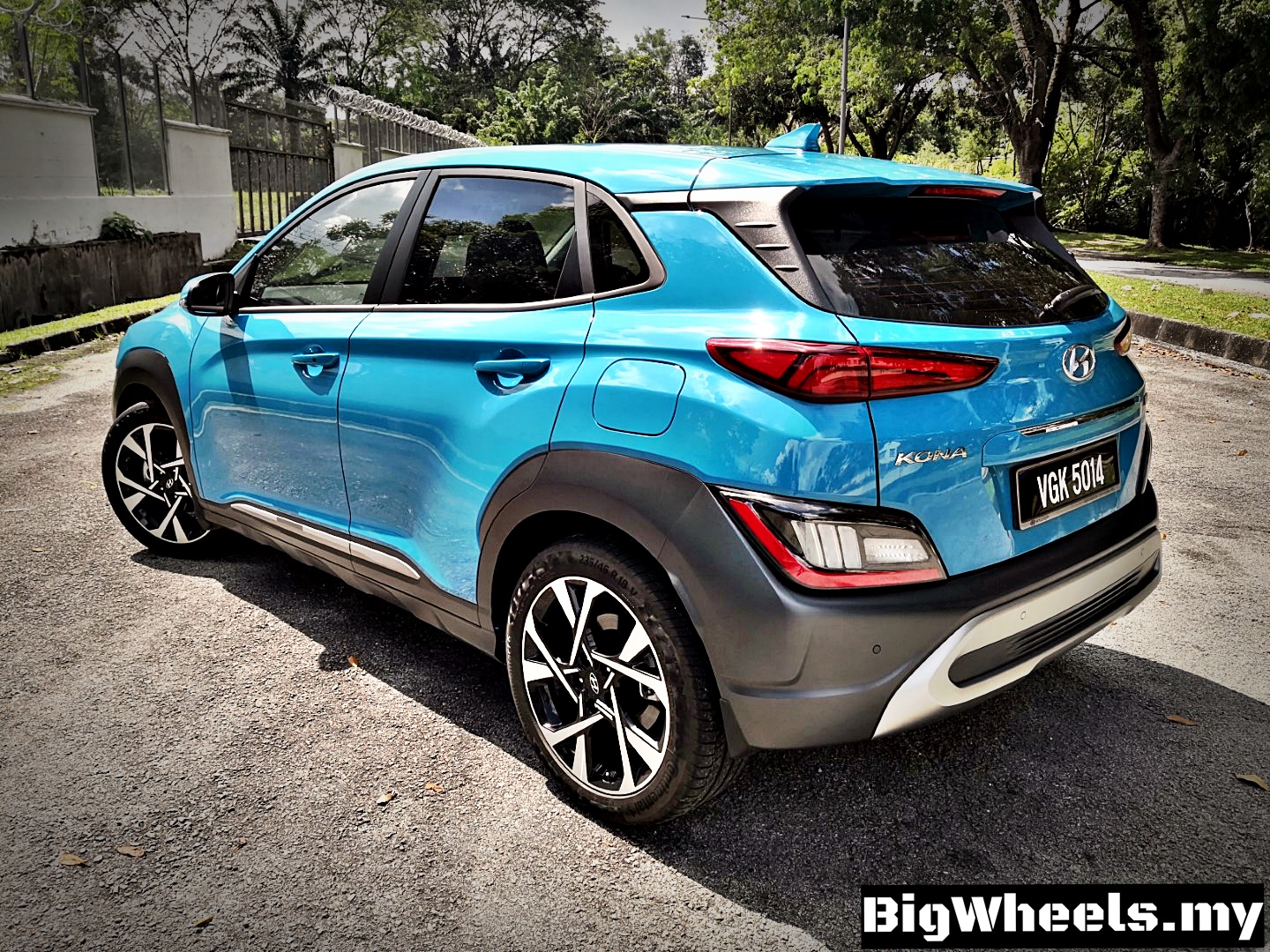
On the exterior, the Hyundai Kona 2.0 Active comes with dual LED headlights, LED combination tail lamps, LED DRLs, 18-inch wheels, front and rear fog lamps, as well as Electric powered side mirrors with heating function.
Inside, we have a generous dose of leather upholstery, a 10-way power adjustable driver’s seat, 60:40 split-folding rear seats, a 10.25-inch TFT LCD display, automatic climate control, an 8-inch touchscreen infotainment system with six speakers, Apple CarPlay and Android Auto connectivity, a Head Up Display (HUD), and three USB ports.
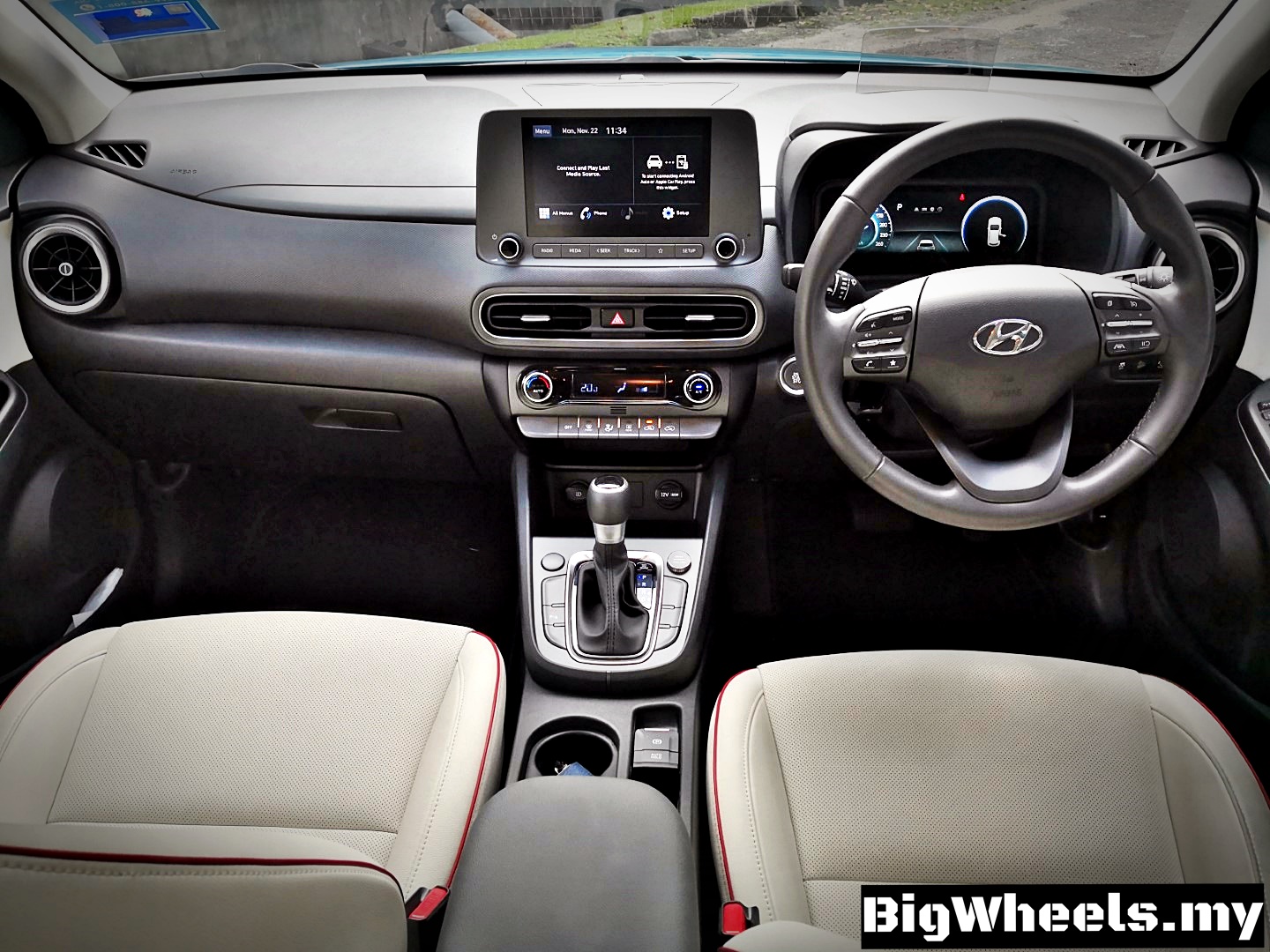
Offering 374-litres of boot space (versus Proton X50’s 330 litres, Honda HR-V’s 448 litres), the Hyundai Kona 2.0 Active comes with an extensive list of safety and driver assistance features as well, which includes 6 airbags, VSM, Hill-Start Assist, Down Hill Brake Control, and Parking Assist.
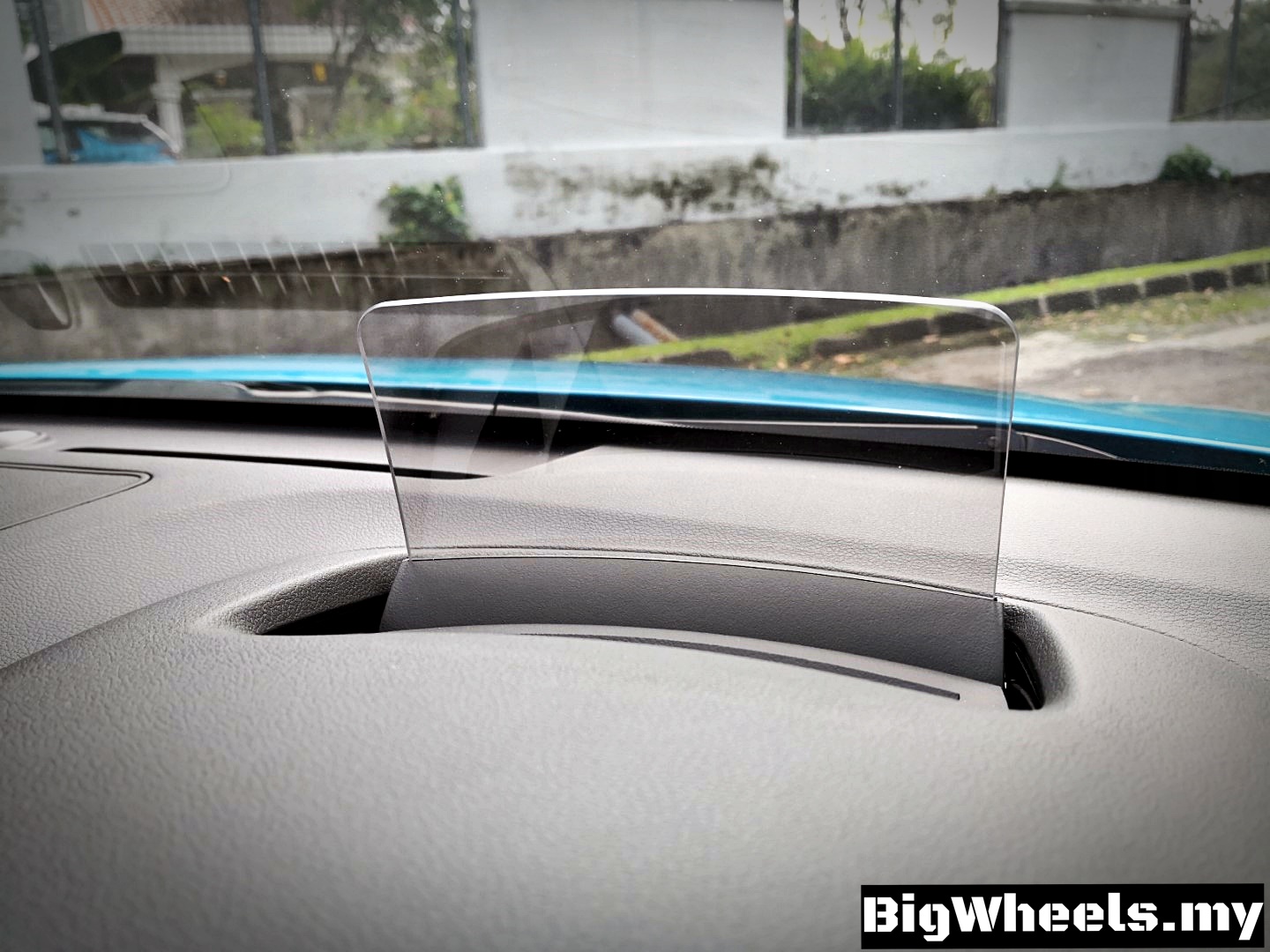
There is also the Hyundai Smartsense system which comprises Blind-spot Collision Avoidance Assist (BCA), Rear Cross Traffic Collision-Avoidance Assist (RCCA), Lane Keep Assist (LKA), Lane Following Assist (LFA), Cruise Control, Forward Collision-Avoidance Assist (FCA), High Beam Assist (HBA), Driver Attention Warning, Rear Occupant Alert, and Safe Exit Warning. How is that for a list of safety and driver assistance features?
Pros
One of the Hyundai Kona Active’s biggest strengths is its design. It clearly shows how much effort the folks at Hyundai have put to make this compact SUV look good, especially with the striking yet sleek and bold front end, the wheel design, and the funky blue exterior paint job.
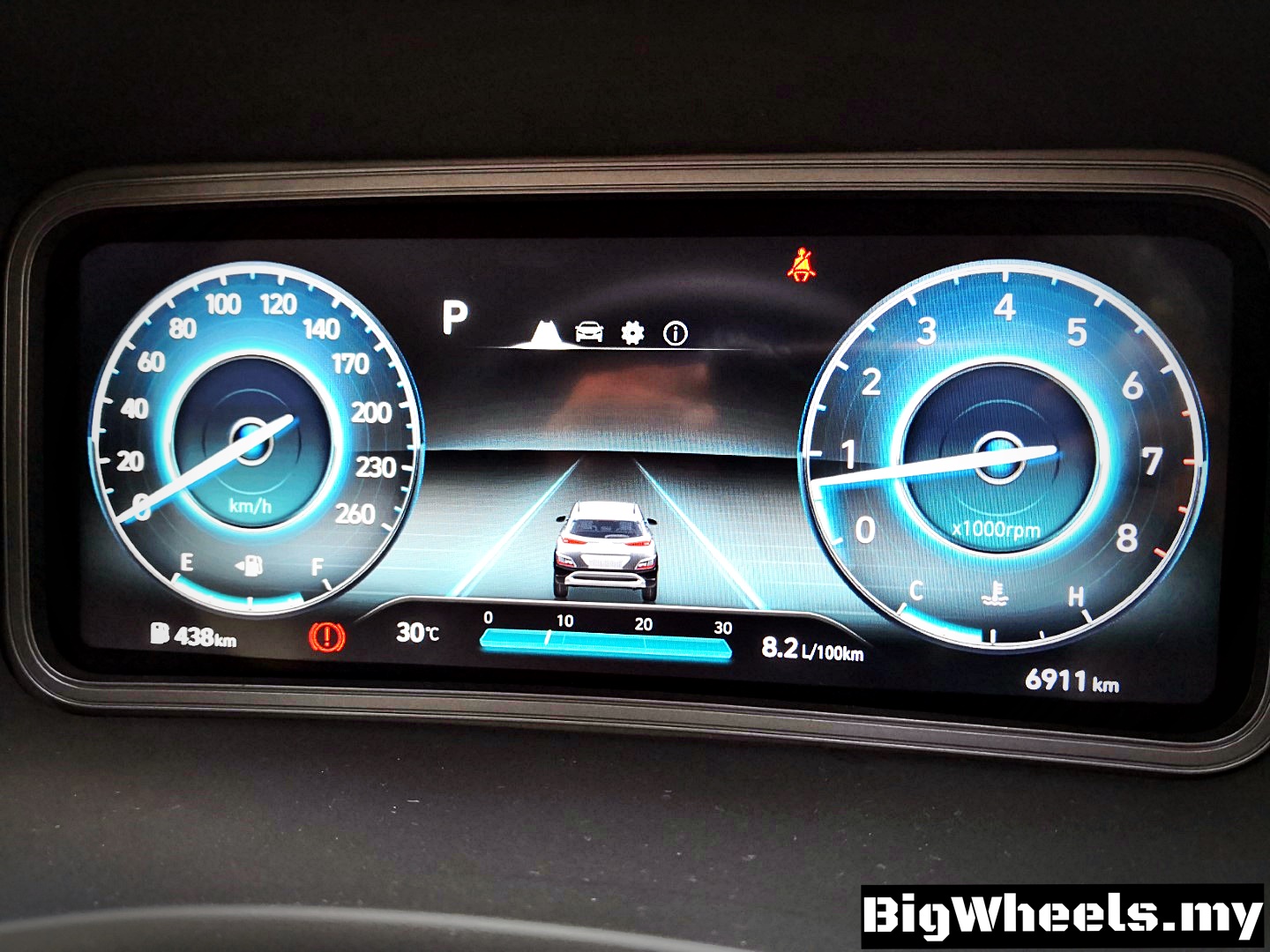
Capable of turning heads towards you at any given time, it would not be an exaggeration to say that the Kona is the best looking model in class, versus the aged Honda HR-V, as well as the Proton X50 or the Mazda CX-3 which look more “simple”.
Complementing the stylish exterior is the well-built, premium looking interior with full leather seats all around, minimal number of buttons, a fully digital instrument panel with various display themes, the head up display, and the Mercedes-Benz-ish air vents.
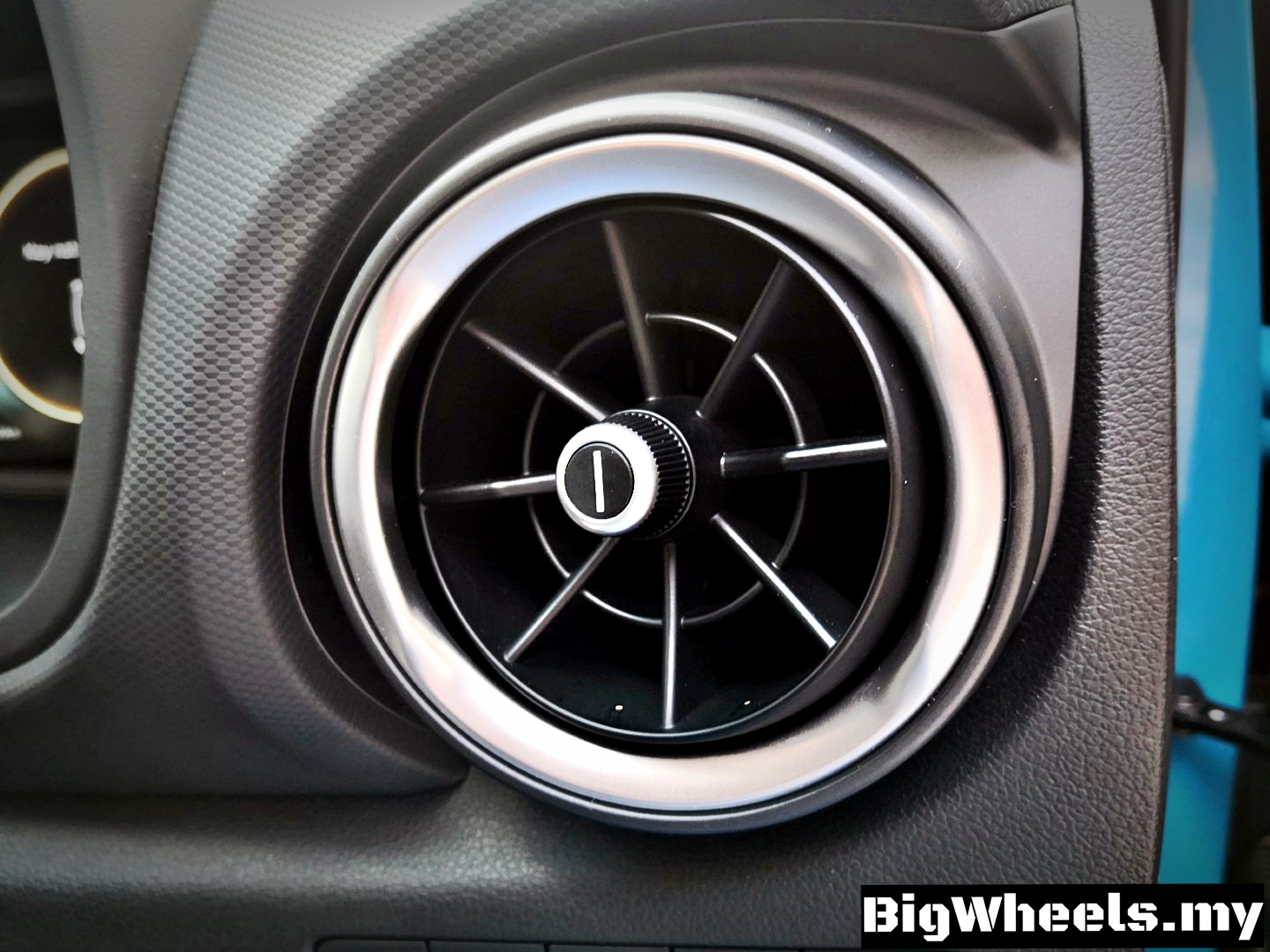
The level of noise, vibration, and harshness is kept impressively low, while the level of comfort is also very good thanks to the leather seats that provide good support at all times.
The infotainment system, HUD, and the digital TFT screen are all quite easy to use, and took us very little time to get used to, unlike the Proton X50’s system which is a tad more complicated.
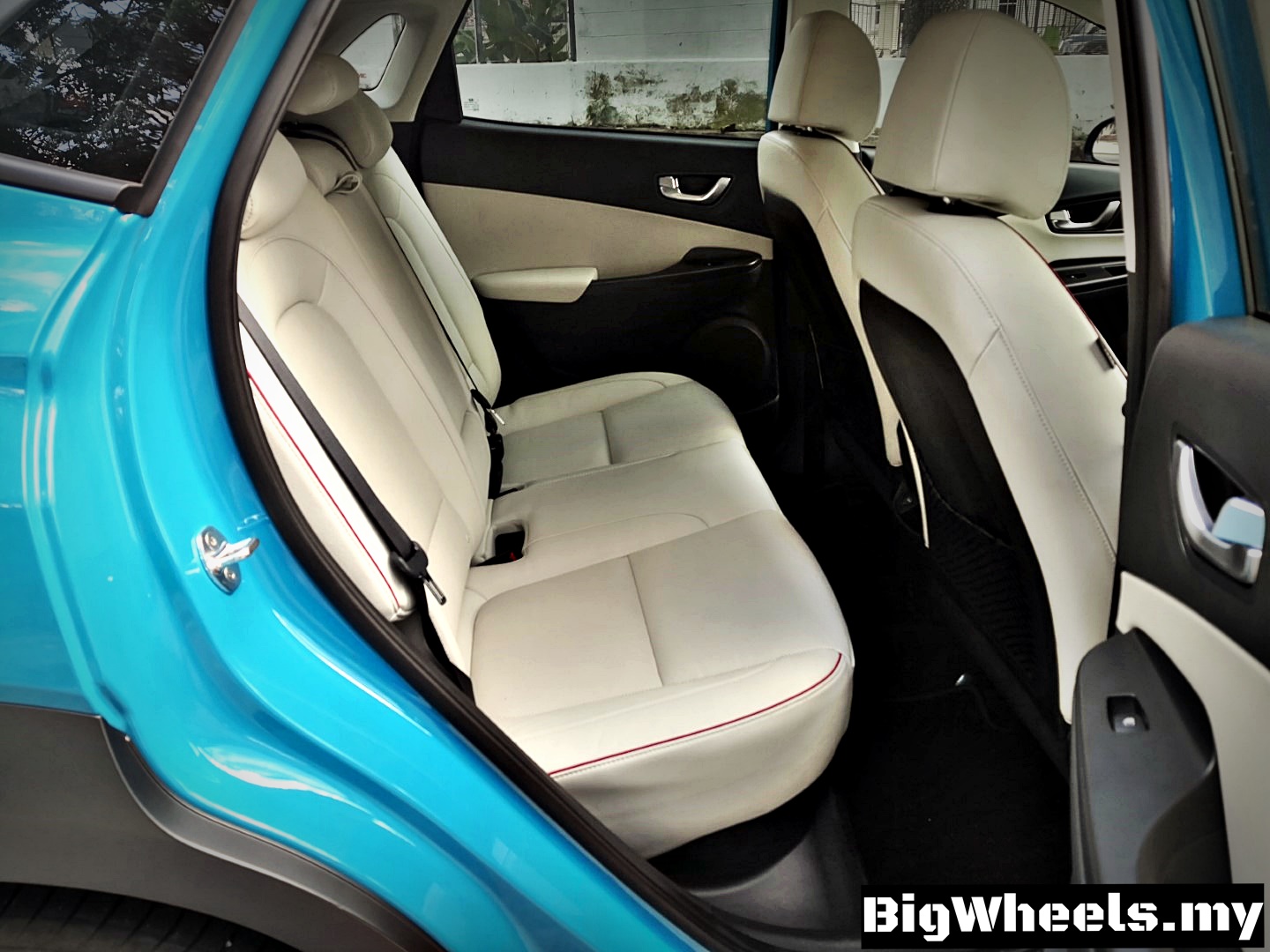
In terms of driving dynamics, the Kona actually handles well, produces adequate amount of power during city runabouts and also during highway cruising, and feels comfortable and quiet.
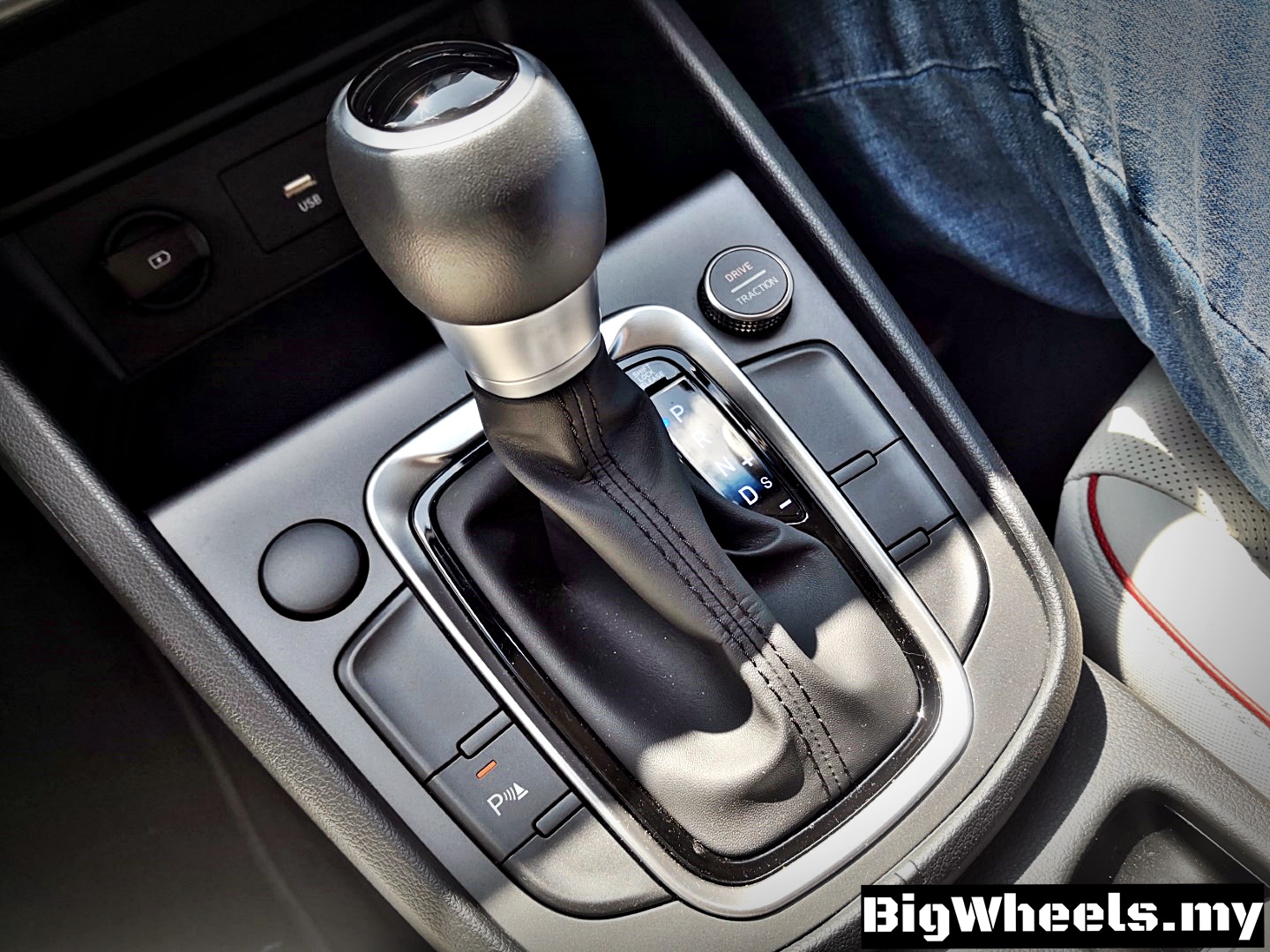
Everything we saw and touched were where they were supposed to be, looked good and felt good too, thanks to the usage of high-quality material and minimal amount of hard plastic.
Cons
Performance wise, the Kona is not as punchy as the turbocharged Proton X50, but the 149 PS and 180 Nm of torque is actually adequate for daily usage, and doesn’t really feel underpowered.
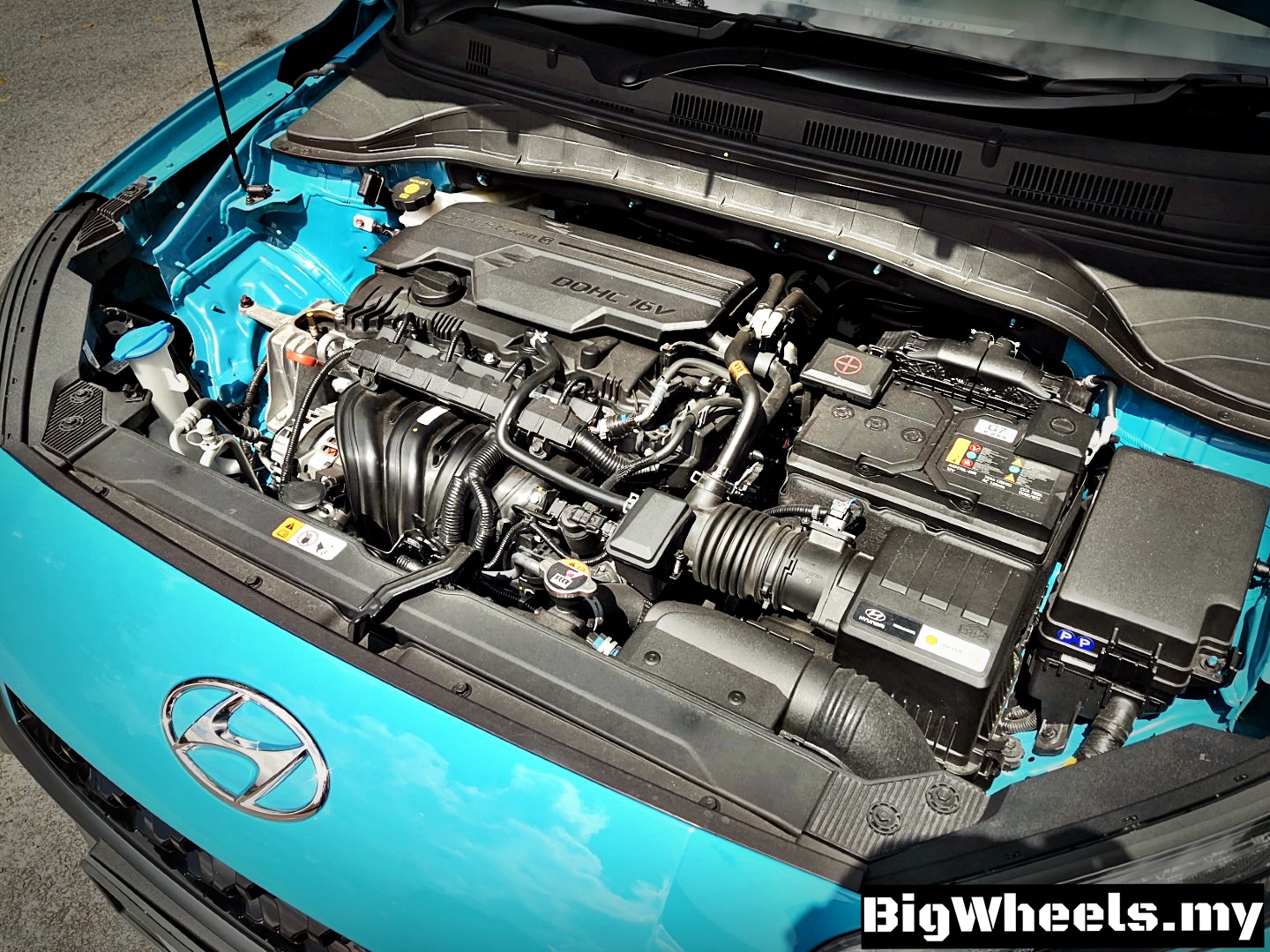
However, if you’re all about power, you may want to get your hands on the more exciting Kona 1.6 turbo N Line which produces 198 PS and 265 Nm of torque.
In terms of handling and overall build quality, the Kona Active is good but it is not as good as a Mazda CX-3. It is definitely more spacious though. Speaking of space, the Hyundai Kona 2.0 Active has enough space for four adults to sit comfortably, but it is not spacious as the Honda HR-V.
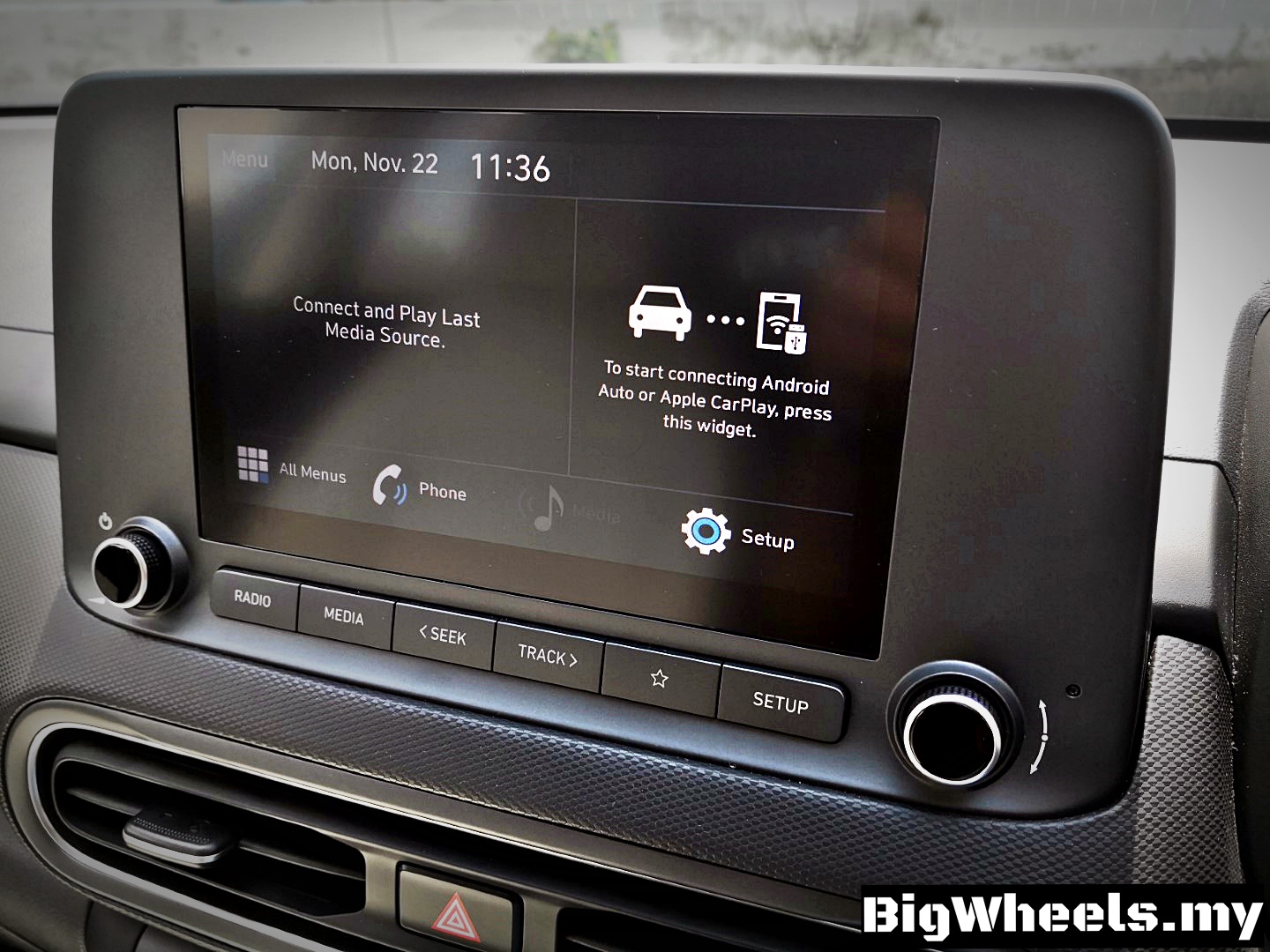
Another disadvantage of the Hyundai Kona 2.0 Active is that it comes with a 2.0-litre engine, meaning you will be paying more for road-tax compared to most of its rivals that are powered by 1.5- or 1.6-litre engines. However, if you get your hands on the Kona 1.6 Turbo, the problem is solved.
Last but not least, if you decide to purchase the Hyundai Kona 2.0 Active here, the white interior – as good as it looks – may not be a good idea on the long run as it gets dirty and darkens over time as you can see here.
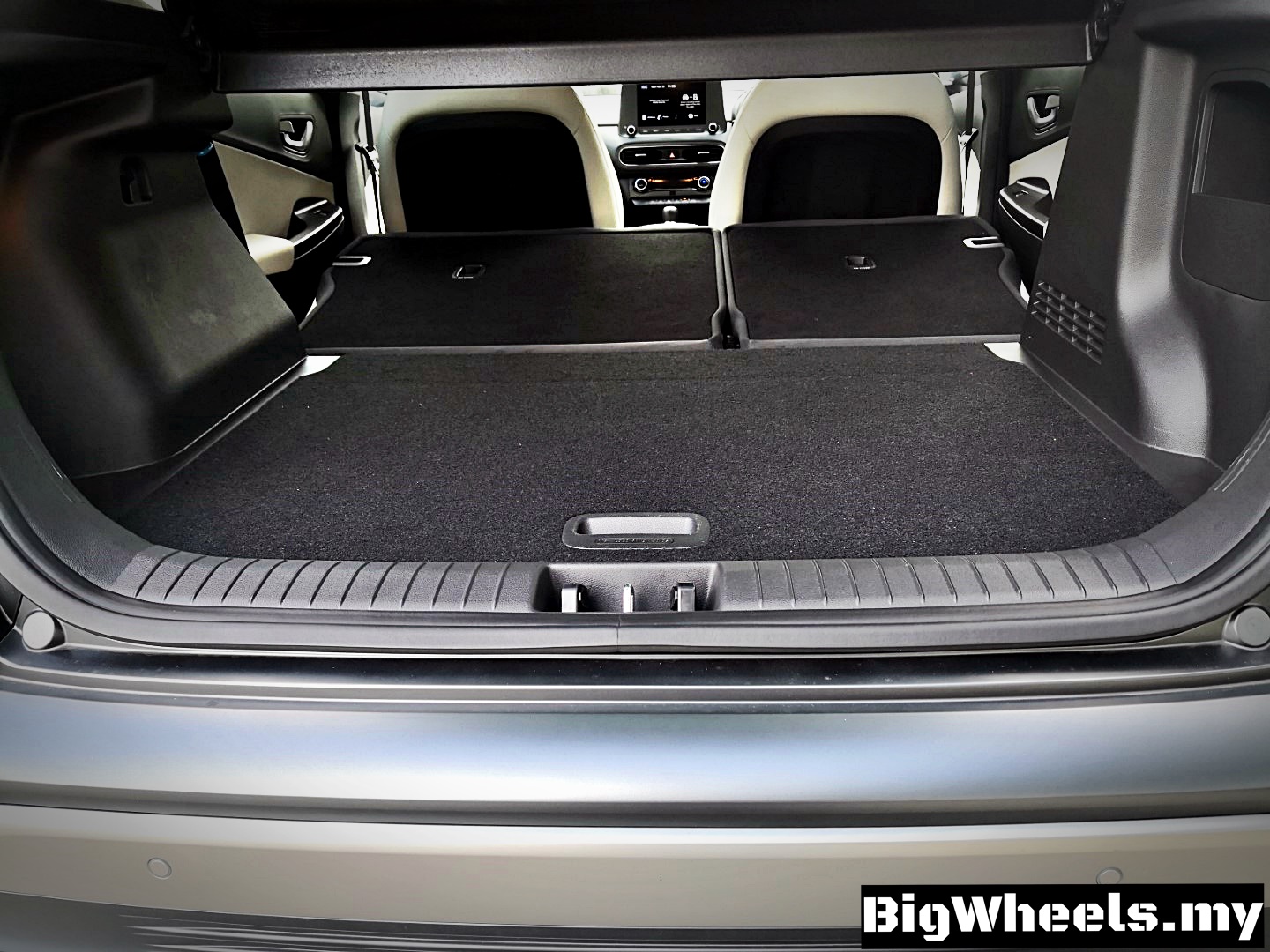
So, unless you’re going to put in extra effort to maintaining the upholstery, go for another interior colour.
Conclusion
So, is the Hyundai Kona 2.0 Active good? Definitely!
What we have here is a compact SUV that looks good, drives well, has enough power, safe, and comes packed with features.
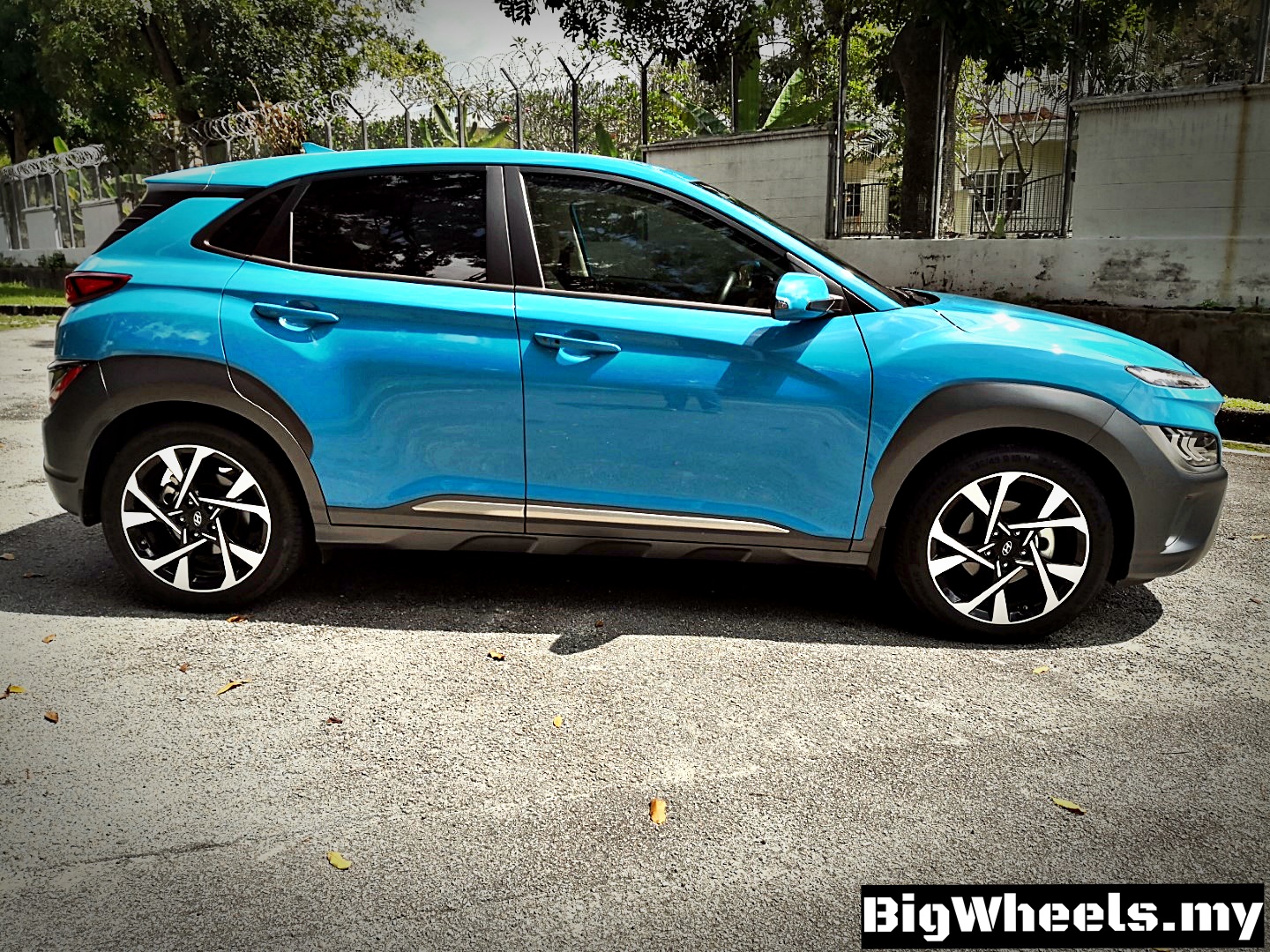
However, it has its flaws like any other vehicle out there. For instance, it loses out to the HR-V in terms of spaciousness, the Mazda CX-3 in terms of refinement, and the Proton X50 in terms of price, but it also has its advantages over these models as it is more refined than the Proton and the Honda, and more spacious than the Mazda.
It may not have any class-leading attributes but it is definitely above average, and has improved a lot from what it was before the facelift. The only issue is the price tag of RM136,888 which makes it among the pricier models in the segment.
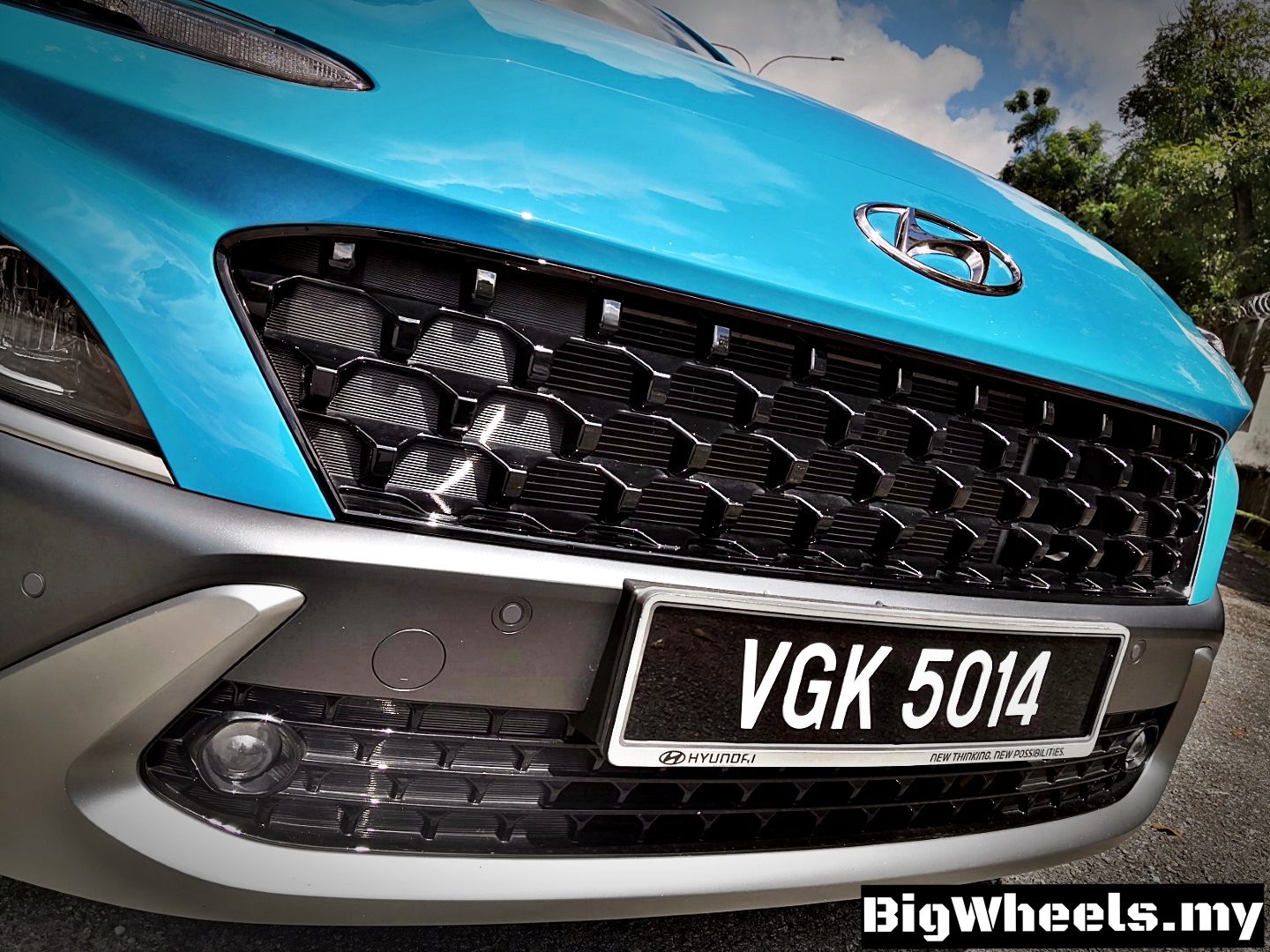
That being said, if you don’t want a Proton, don’t want a Japanese model, and don’t mind paying slightly more for an equally decent B-segment crossover that stands out from the rest visually, you may want to check the Hyundai Kona 2.0 Active out.

